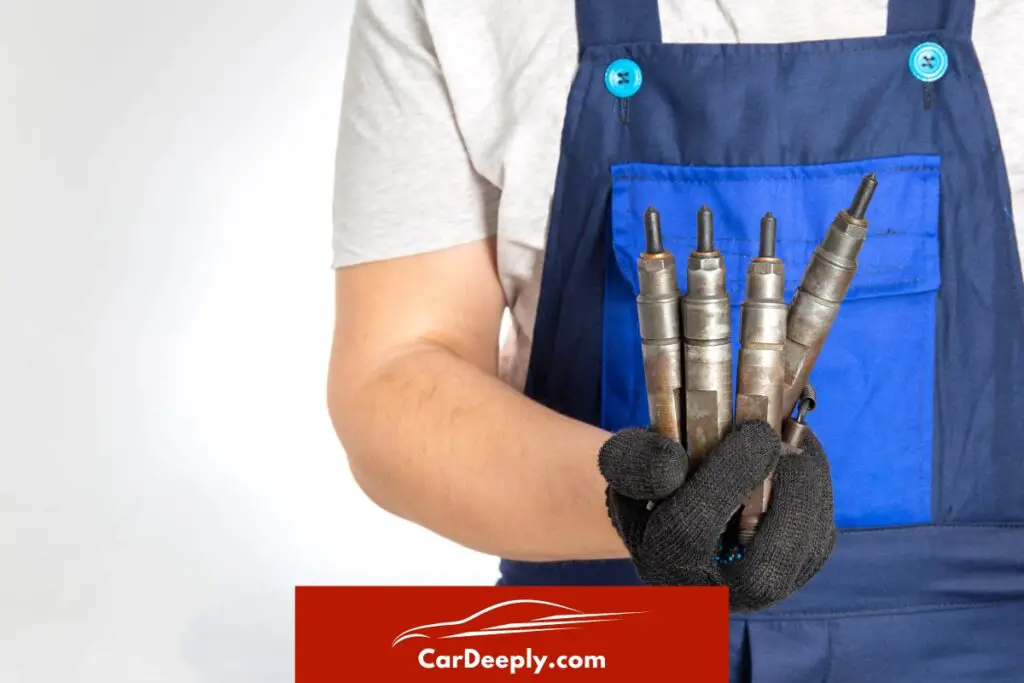Diving into the world of IPR valve symptoms can be a maze, but not today. With years of automotive expertise under our belt, we’ve crafted a guide that’s both comprehensive and actionable.
By the end of this read, you’ll be equipped with:
- A clear understanding of the IPR valve’s role.
- Practical insights to diagnose a faulty IPR valve.
- Effective solutions to common IPR valve issues.
Don’t let common pitfalls derail your vehicle’s performance. Stay ahead, and let’s dive deep into the intricacies of the IPR valve.
Ready to become an expert?
Keep reading.
Advertising links are marked with *. We receive a small commission on sales, nothing changes for you.
Key Takeaways

- The IPR valve regulates fuel delivery in the Powerstroke Engine.
- Symptoms of a failing IPR include stalling and poor gas mileage.
- Regular maintenance can prevent IPR valve malfunctions.
- Diagnostic tools can help identify IPR-related issues.
- Addressing IPR problems promptly ensures vehicle safety and performance.
Understanding the IPR Valve
What is an IPR Valve?
The Injector Pressure Regulator (IPR) Valve is pivotal in your vehicle’s engine, particularly the Powerstroke Engine. It’s responsible for controlling the pressure in the injectors, ensuring the right amount of fuel is delivered to the engine.
Think of it as the gatekeeper, determining how much fuel gets to the engine.
Importance in the Powerstroke Engine
The Powerstroke Engine, renowned for its durability and power, heavily relies on the IPR valve. This valve ensures the engine gets the precise fuel amount, optimizing performance and fuel economy.
A malfunctioning IPR can lead to various issues, from poor gas mileage to engine stalling.
Practical Insights:
- Regularly check the IPR valve for debris or damage.
- Monitor your vehicle’s fuel economy. A sudden drop can indicate an IPR issue.
- Listen for unusual engine sounds, a telltale sign of IPR problems.
Common Symptoms of a Failing IPR Valve
When the IPR valve falters, your vehicle won’t keep it a secret. Here are some symptoms to watch out for:
Vehicle Fails to Idle Smoothly
A smooth idling engine is music to the ears. But if you notice your vehicle’s engine sputtering or vibrating excessively, it’s a red flag. The IPR valve might be the culprit, struggling to maintain consistent fuel pressure.
Engine Cranks But Doesn’t Start
Imagine turning your vehicle’s ignition, only to be met with silence. Frustrating, right? If the engine cranks but doesn’t roar to life, the IPR valve might fail to regulate fuel pressure adequately.
Stalling Engine
An engine that stalls, especially at traffic lights or intersections, can be both annoying and dangerous. This can be attributed to the IPR valve not delivering enough fuel to the injectors.
Injectors Surging
If you notice your vehicle’s engine surging or hesitating during acceleration, it’s a clear sign of injector issues. The IPR valve might allow too much or too little fuel, causing these surges.
Poor Gas Mileage
We all love a fuel-efficient ride. But if you find yourself at the gas station more often than usual, it’s time to inspect the IPR valve. A malfunctioning valve can lead to inefficient fuel combustion, draining your wallet.
Actionable Tips:
- Regularly monitor your vehicle’s performance.
- At the first sign of any symptom, consult a mechanic.
- Consider investing in a diagnostic tool to pinpoint IPR valve issues.
Understanding the IPR valve’s role and being vigilant about potential symptoms ensures your vehicle remains in top-notch condition. Remember, prevention is always better than cure.
So, stay informed and drive safe.
Diagnosing a Bad IPR Valve
Knowledge is power, especially when it comes to vehicle maintenance. Let’s delve into how to identify a malfunctioning IPR valve.
Using a Scan Tool and Diagnostic Equipment
Modern vehicles come equipped with intricate computer systems. These systems can be your best friend when diagnosing issues.
Steps to Follow:
- Connect a reliable scan tool to your vehicle’s OBD-II port.
- Turn on the ignition and initiate a diagnostic scan.
- Look for any error codes related to the IPR valve or fuel pressure.
Checking Oil Levels
The quality and engine oil level can influence the IPR valve’s performance.
Steps to Follow:
- Park your vehicle on a level surface.
- Wait for the engine to cool down.
- Pull out the oil dipstick, wipe it clean, and reinsert it.
- Pull it out again and check the oil level. If it’s below the minimum mark, consider topping up.
Unplugging the ICP Sensor and Looking for Codes
The ICP (Injection Control Pressure) Sensor works hand in hand with the IPR valve. Unplugging it can give you a clearer picture of any underlying issues.
Steps to Follow:
- Locate the ICP sensor in your engine bay.
- Carefully unplug it.
- Use your scan tool to check for any new error codes.
Solutions to IPR Valve Problems
Identifying the problem is half the battle. Now, let’s explore some hands-on solutions to common IPR valve issues.
Clearing Debris from the Valve
Over time, debris can accumulate in the IPR valve, affecting its performance.
Steps to Follow:
- Remove the IPR valve from the engine.
- Use a clean cloth to wipe away any visible debris.
- Consider using a specialized cleaning solution for a thorough cleanse.
Replacing Damaged O-Rings
O-Rings ensure a tight seal, but they can wear out or get damaged.
Steps to Follow:
- Inspect the O-Ring on your IPR valve.
- Replace it with a new one if it appears damaged or worn out.
- Ensure the new O-Ring fits snugly and securely.
Replacing the IPR Valve
Sometimes, the best solution is to start fresh with a new IPR valve.
Steps to Follow:
- Purchase a quality IPR valve compatible with your vehicle.
- Remove the old valve and install the new one, ensuring a tight fit.
- Test your vehicle’s performance to ensure the issue is resolved.
The Risks of Driving with a Failed IPR Valve
Driving with a malfunctioning IPR valve isn’t just an inconvenience; it can be a hazard.
Potential Engine Damage
A faulty IPR valve can lead to inconsistent fuel delivery, potentially causing engine damage over time. Regular inspections can help prevent this.
Safety Concerns on the Road
Stalling or surging engines can pose significant risks, especially in heavy traffic. Always prioritize safety and address IPR valve issues promptly.
By equipping yourself with this knowledge and these practical insights, you’re taking a proactive step toward ensuring your vehicle’s longevity and performance. Regular maintenance and timely interventions can save you time, money, and potential headaches.
FAQs
How often should the IPR valve be inspected for optimal performance?
Routine inspections every 6 months or during regular vehicle servicing can help identify potential IPR valve issues before they escalate, ensuring optimal engine performance and fuel economy.
Are any specific brands or models known for IPR valve issues?
While the IPR valve is a standard component in many vehicles, certain Powerstroke Engine models might be more susceptible to problems. Refer to your vehicle’s manual and consult a mechanic for model-specific concerns.
Can environmental factors affect the IPR valve’s performance?
Yes, extreme temperatures and environmental contaminants can impact the IPR valve. Regularly driving in dusty conditions or extreme cold can lead to faster wear and tear.
Is it possible to clean the IPR valve without removing it from the engine?
While some cleaning can be done without removal, it’s recommended to remove the IPR valve for a thorough cleanse. This ensures all debris and contaminants are effectively cleared.
How do I know if I need to replace the O-Ring or the entire IPR valve?
The O-Ring might be the culprit if you notice minor leaks or slight performance issues. However, persistent problems or significant performance drops indicate a need to replace the entire IPR valve.

Sebastian loves convertibles and drove a BMW 335i for a long time (325 hp is just a dream). Today, with two children, he is more concerned with SUVs and family-friendly vehicles. In addition to an Audi A4 Avant, he also drives a Cupra Formentor VZ – even as a family man, you can’t do without speed. Get to know Sebastian better and visit the About Us page.
Advertising links are marked with *. We receive a small commission on sales, nothing changes for you.
